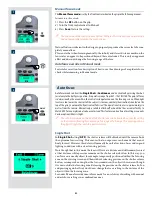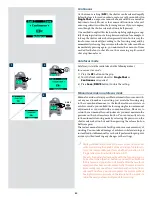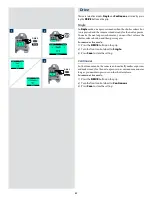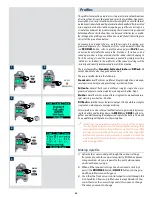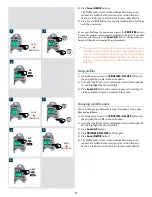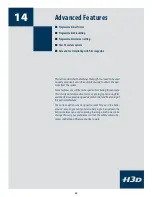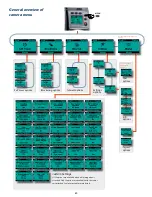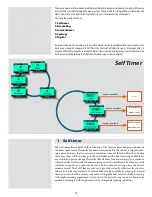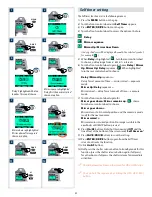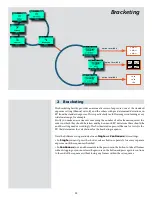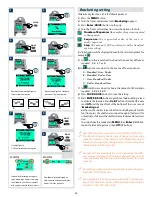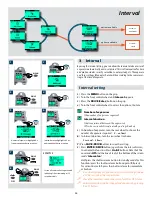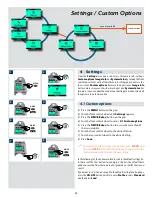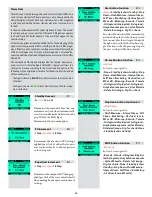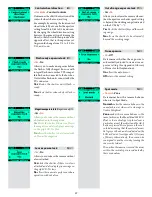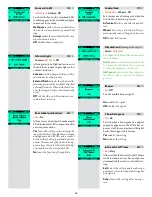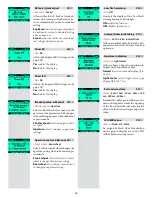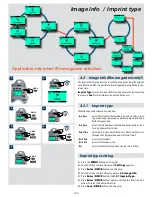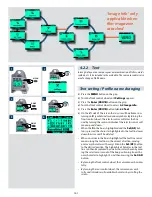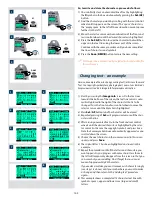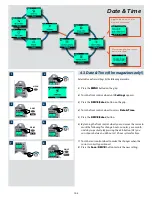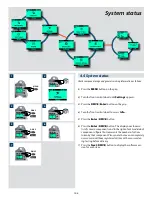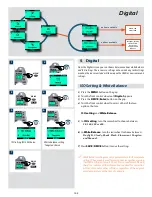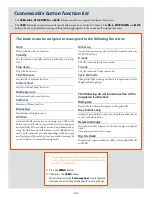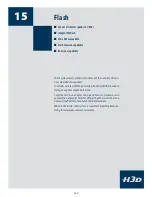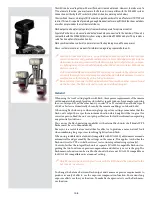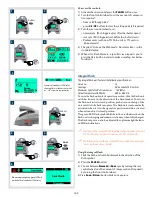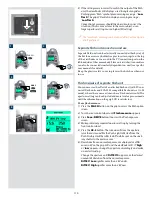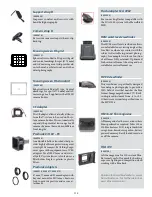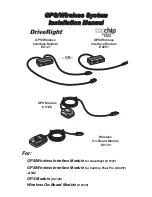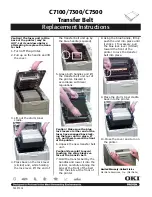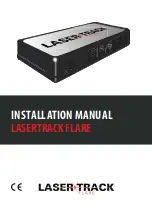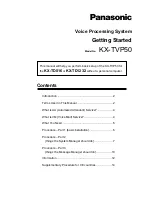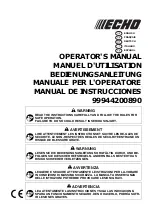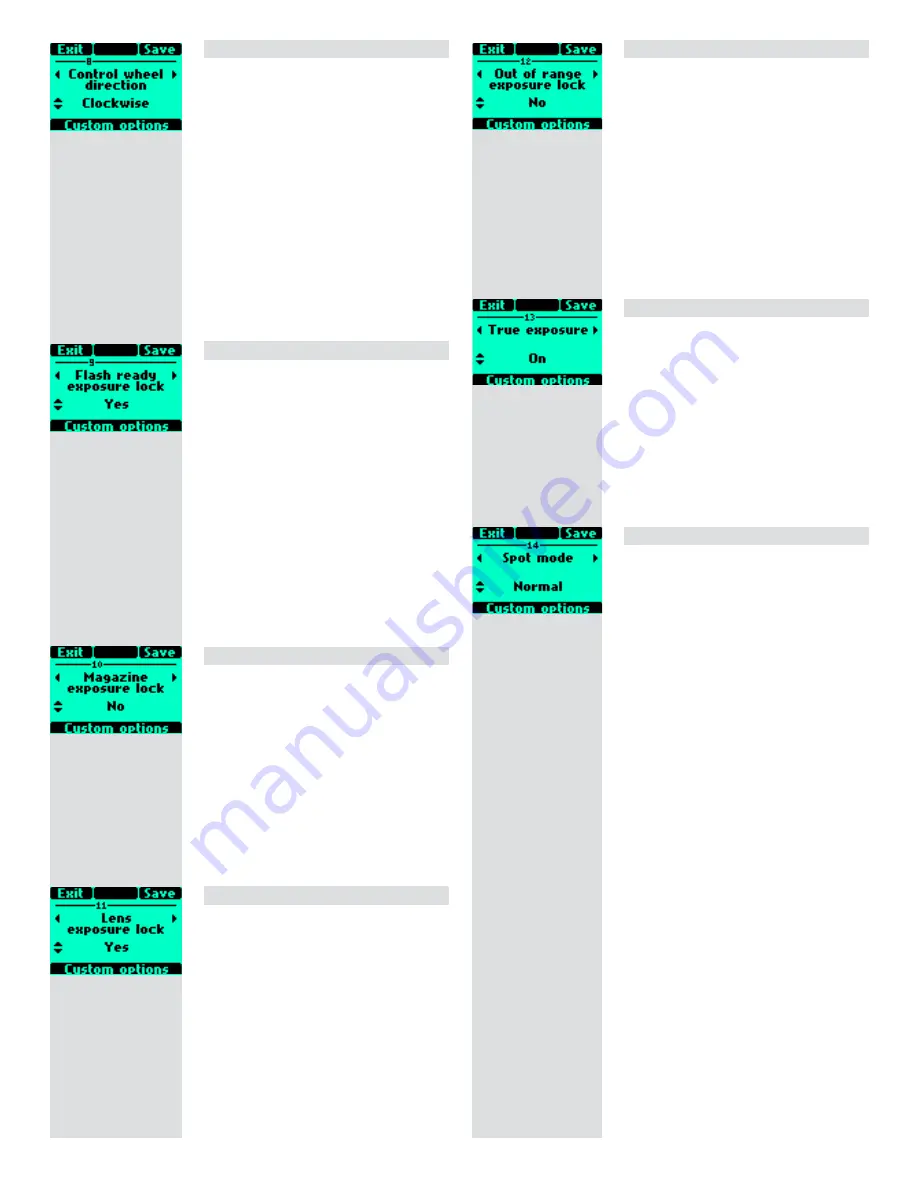
Control wheel direction
8/
8
•
Clockwise
• Counter clockwise
Determines the effect the direction of the
controls wheels have on a setting.
For example, by moving the front control
wheel to the left you can alter the aperture
setting from f/8 to f/6.8 to f/5.6 and so on.
By changing the wheel direction setting
however, the same action of turning the
wheel to the left would then produce the
opposite effect, that is, the aperture set-
tings would change from f/ 8 to f/ 9.5 to
f/ 11, and so on.
Flash ready exposure lock 9/
9
•
Yes
• No
Allows you to make an exposure before
the flash is fully charged. For use with
integral flash unit or other TTL compat-
ible flash units connected to the hot-shoe.
Not valid for flash units connected by the
PC connector.
Yes
blocks the shutter until flash is
ready.
No
allows shutter release before flash is
ready.
Magazine exposure lock
(Magazine only)
10
• Yes •
No
Allows you to release the camera without
a film loaded in the magazine.
Yes
blocks the shutter if there is no film in
the magazine and also displays a message
on the grip LCD: No film.
No
allows the shutter to be released with
no film in the magazine.
Lens exposure lock
10/
11
•
Yes
• No
Allows you to release the camera without
a lens attached.
Yes
blocks the shutter if there is no lens
attached and also displays a message on
the grip LCD: No lens.
No
allows the camera to perform a release
operation without a lens.
Out of range exposure lock 11/
12
• Yes •
No
Allows you to release the camera when ei-
ther the aperture or shutter speed setting
is beyond the working range (indicated
on the LCDs by “—”).
Yes
blocks the shutter if beyond the work-
ing range.
No
allows the shutter to be released if
beyond the working range.
True exposure
12/
13
•
On
• Off
Determines whether the exposure is
automatically adjusted to create a true ex-
posure setting. (See Appendix, Glossary
of Terms for full explanation).
On
allows the adjustment.
Off
retains the normal setting.
Spot mode
13/
14
•
Normal
• Zone
Determines how the camera behaves
when set to Spot Mode.
Normal
makes the camera behave in the
same fashion as when set to Average or
Centre Weighted.
Zone
makes the camera behave in the
same fashion as the Hasselblad 205FCC.
That is, the central spot is placed over a
particular area of the subject and the AE-L
button is pressed. The exposure is then cal-
culated assuming that the metered area is
18% grey or Zone 5 and is indicated on the
LCD as Zone 5 (see Appendix / Glossary
of Terms). Alternatively, the area can be
reassigned to another zone by turning the
rear control wheel.
Then, when the camera is moved, the areas
within the central spot are indicated by
their zone values.
97

